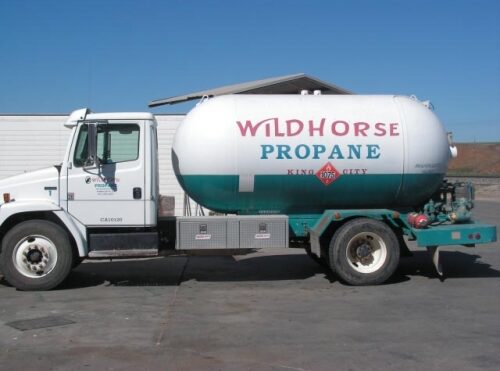Even when you are on a regular delivery schedule from Wildhorse Propane & Appliances, there are times when you want to check your propane tank’s meter. Wildhorse’s delivery driver always checks the tank’s connections and gauges during propane deliveries to communities in and near San Juan Bautista. Customers are also encouraged to know how to read the gauge and check it periodically.
In most cases, you are not going to run out of propane between regular deliveries. Things that might cause lower than usual levels of propane, or an empty tank include:
- A leak. A leak is a very serious matter because propane is flammable and an explosion or fire is a real danger. Fortunately, the chemical added to propane to give it a strong rotten egg smell is a safeguard to help identify leaks. Anytime you smell rotten eggs around the tank, or anywhere in or near the house, immediately shut off the valve at the tank, call 911, and then call Wildhorse Propane & Appliances. The tank valve is located under the cover on top of the tank, along with the gauges.
- Unusually high propane use, especially when running heating or air conditioning during extreme weather.
- During the holidays or other occasions when you might be cooking and baking more than usual.
How do I read the propane tank gauge?
The gauge is located under the cover on top of the tank. The propane gauge has numbers from 5 to 95. There is another gauge with numbers from 0 – to 300. That’s the pressure gauge.
- The numbers on the gauge indicate the percentage of propane in the tank. The number the needle points to is the percentage of fullness of the tank.
- Because propane is stored under pressure and needs room to expand, a tank that is 80% full is considered full. If you see the needle pointing to 80, that means your tank is full.
- When the needle is pointing to 20 (20%) that means it’s time to refill the tank. It’s safest to refill the tank before it reaches 20%.
The amount of propane in your tank depends on the size of the tank. When you first set up regular deliveries, the San Juan Bautista propane delivery driver can tell you what size the tank is, what the ideal pressure will be, and the ideal gauge reading indicating that it is time for an extra delivery.
Why should I check the gauge?
Before the first delivery, the Wildhorse team has already helped you analyze your normal propane usage, and regular deliveries are timed to make sure you always have plenty of propane. But, there may be times when you use more propane than normal.
Make a habit of checking the gauge, especially when the weather or extra company might have caused higher propane usage.
No one wants to run out of propane.
Additional tips for propane management
The Wildhorse Propane delivery driver checks your tank for safety, loose connections, or damage at every delivery. In most cases, the tank is safe and secure, but some circumstances mean you should check the tank and connections before the next delivery.
- Storms and heavy rain that oversaturate the ground around the tank or may have blown branches and heavy debris against the tank.
- An earthquake.
- A wildfire.
- An unusual freeze or snowstorm.
If you notice any damage to the tank, or it has shifted position, shut off the valve, call 911 if there is a leak, then call Wildhorse Propane.
Ask questions and be informed
New propane tanks come with a manual. Read the manual carefully, even though the Wildhorse team has explained everything you need to know.
- Don’t hesitate to ask questions.
- If you move into a new location that already has a propane tank for your use, ask the Wildhorse Propane team to inspect the tank for safety.
Wildhorse Propane & Appliances has been delivering propane since 1980. Regular propane routes encompass San Juan Bautista, Hollister, and nearby communities in both San Benito and Monterey Counties. Along with propane deliveries, Wildhorse offers a wide range of top-of-the-line propane appliances including stoves, refrigerators, washers, air conditioning, heating, water heaters, and more.

